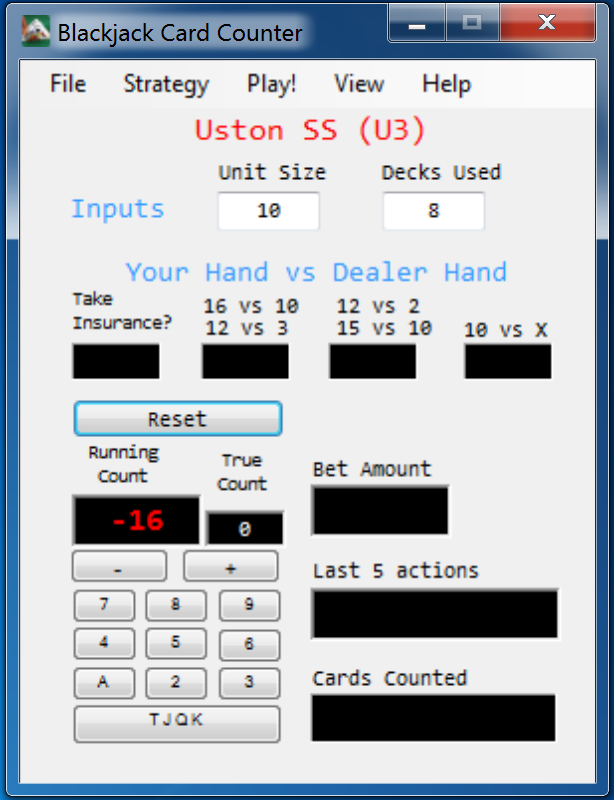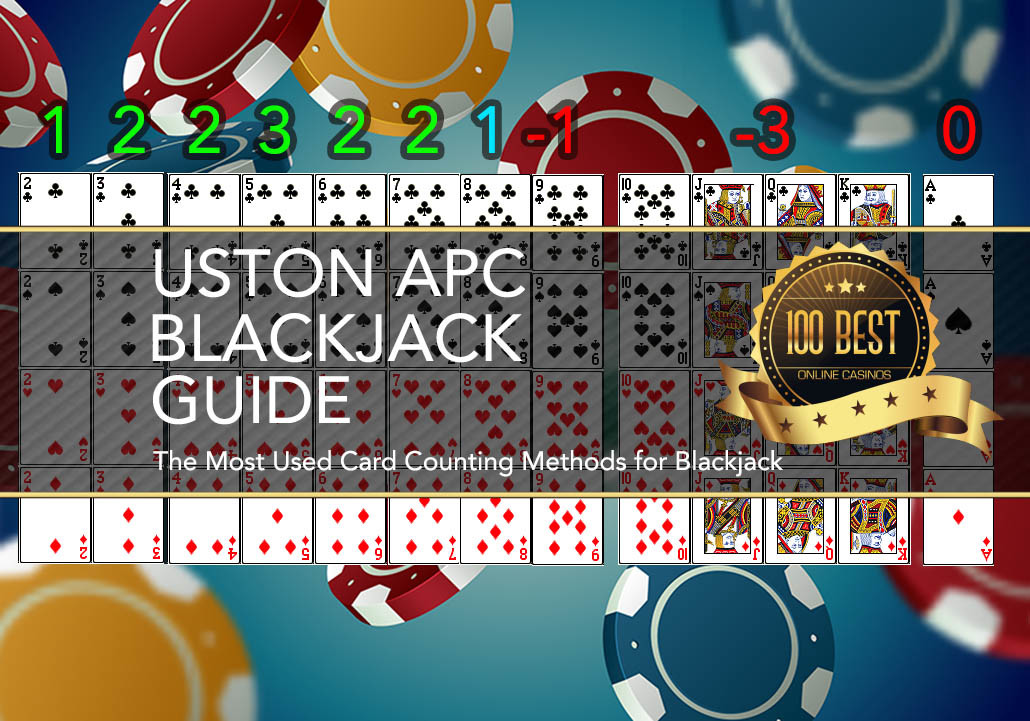Card Counting Systems
How Counting Systems Work
Card counting is a system for tracking the probability of receiving cards that are favorable to you, during the course of a game. With card counting, the idea is not to count the numbers of each.
Let me give you just a bit of the thinking behind counting systems so you’ll understand how, and why, they work.
History of Card Counting. Back in the 1950’s, the first basic strategy system and simple card counting systems were devised. The systems didn’t get much attention until the 1960’s, when a mathematics professor by the name of Dr. Thorp published a book titled Beat the Dealer. Card counting is a system that experienced blackjack players use to get a profitable advantage over the casino. There are many individual “counts” or systems. Many of them are named after colorful professional gamblers from times past. The 2008 movie “21” bought card counting to.
All the systems, in one way or another, recognize the importance of the different cards to the player. For example, the most important card to a player is the Ace, because it’s part of a ‘blackjack‘ or ‘natural‘, as we prefer to call it.
The bonus that a natural pays is of paramount importance; it’s worth about 2.3% to the player.
In other words, if a game pays only even-money for a natural, the casino gains an additional edge of 2.3% on the player, over and above the
Therefore, the removal of an Ace from a deck or decks of cards has a measurable impact on a player’s edge.
As an extreme example, if all 4 Aces are removed from a single-deck game, the casino will have a huge edge which is virtually impossible to overcome. So, the “effect of removal” for Aces is significant and can be quantified.
The same is true for the 5; it’s the most important card for the
Remove all the 5s from a single-deck game and the player has a nice 2+% edge over the casino. So, the “effect of removal” for 5s is also significant and can be measured.
Best Card Counting Systems
Thus, the first thing a counting system does is give us a way to calculate our advantage or disadvantage over the casino as cards are played or ‘removed’.
Another role of a good counting system is to give us some idea on how to play the hand. Or, more correctly, when to deviate from the proper playing strategy.
To use the example above, if we were in a single-deck game and all the 5s had been played, would you hit a 16 against a dealer’s 10?
Well, you might, but the play of that hand has been affected by the removal of the 5s. So, obviously, we have an “effect of removal” when it comes to playing the hand, as well as figuring our advantage. But this is, as you can imagine, less precise because the values are constantly changing.
The value of a 5 when we have a 16 to hit is very high, but the value of the 5 when we have a 9 to double is very low. All we can do is basically average the impact of a 5 when playing a hand and hope for the best.
You can see where this leads: if a counting system is good for betting purposes, it’s not as good for playing purpose and vice-versa.
Before we leave the theory part, we need to address one more area and that’s the insurance bet
Advanced Card Counting Systems
The ability to make accurate insurance bets is very important to a counter, in fact, it’s the

How well a counting system ‘predicts’ the 10 in the hole is an important consideration. A system which is very accurate for the insurance bet is, surprisingly, pretty good at making playing decisions, but it’s downright poor at indicating our edge over the casino.


The Three Ratings
Easiest Card Counting Systems
All counting systems or methods can be rated in three ways for how they treat the factors mentioned above.
The first rating is a system’s “betting efficiency”, which indicates how accurately the count measures your edge over the casino. For example, if the rules of a casino indicates that they have a 0.5% edge over the player who uses proper Basic Strategy, a counting method with 100% betting efficiency would precisely measure the edge (or lack thereof) for the player, IF the player was keeping the count accurately and figuring the true count correctly. Of course, some sort of money management program would still be necessary, because even though a player may have an edge, it doesn’t necessarily follow that s/he is going to win the hand.

Comparison Of Card Counting Systems
The second rating is the “playing efficiency” which measures how well the system guides us in making basic strategy variations except the insurance decision, which is treated separately; and that’s the third rating; “insurance efficiency”. All of these ratings are shown as averages, since there are times when a system can be very accurate and, at other times, it can be very inaccurate.
The Hi/Lo system, for example, is very accurate when it’s indicating you should double 11 versus an Ace, (82%), but quite inaccurate when telling us to stand with 16 versus 9 (53%).
The Best of the Best
The best count for the insurance bet is 100% accurate, as is the best count for betting. The best count for playing purposes is about 70% accurate, but unfortunately, no count currently exists which can offer all this in one package. So, you have to decide which will work best for you.
If you play a lot of single-deck with a 1-4 spread, then a system with a good playing efficiency will probably be best, if you have the opportunity to spread from 1-12 betting ‘units’, then you’ll want something with a strong betting efficiency and, if you often play with a friend or spouse at the same table, you should have him or her learn the best insurance count and work out a signaling system to share information.
My Personal Preference
Best Card Counting Systems
I teach the Hi/Lo system of counting because it’s easy to learn, easy to use and relatively effective at most games, particularly multi-deck games where a large bet spread can be attained.
But I recognize that Hi/Lo has its limitations and the games available to you may be better exploited by a different system.
In this series, I’ll examine a lot of the different counting systems so that you can make up your own mind regarding which is the best to use.
I find, by using the training methods I’ve learned, that it’s fairly easy to learn a new counting method; in fact, I use a different system when I play single-deck games and I have few problems in keeping my count straight after just an hour or two of ‘refresher’ practice.
I will say, however, that on any particular trip, I stick to one or the other.
I never try to play some single-deck, then a bit of multi-deck and then move back to
Remember that double-deck games have a lot more in common with six decks than one deck, so I treat those as multi-deck games.
The Series
What I’ll do here, over time, is try to examine the various counting systems out there in a rational order. Not only will I give you their 3 ratings, but will discuss their pros and cons as well as their strengths and weaknesses.
Numbers alone don’t tell the story; if you play for many hours at a stretch, a difficult system isn’t going to be very effective if you’re making a lot of mistakes, for example. We generally classify counting systems on ‘levels’. The Hi/Lo is a ‘one-level’
I’ll also address unbalanced systems which do not require a conversion to true count and we’ll take a look at some ‘theoretical’ systems as well. (How about one where the Ace is +51 and the 10 is -180; not practical for a human, perhaps, but not too difficult for a computer).
Just so you know, the Hi/Lo has a betting efficiency of 97%, a playing efficiency of 51% and an insurance efficiency of about 80%.